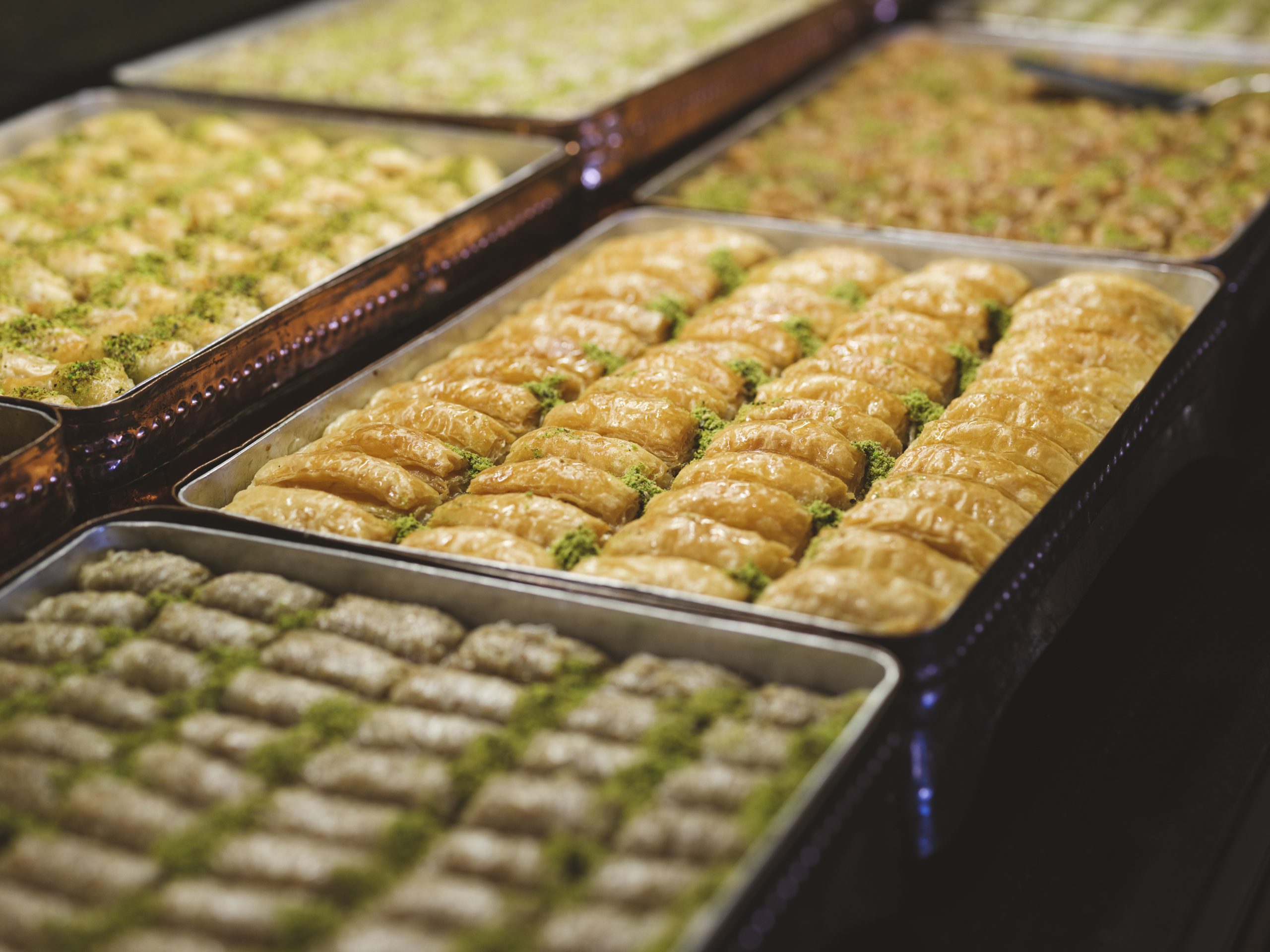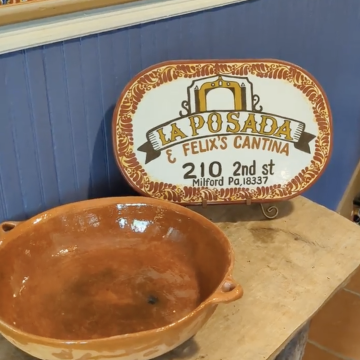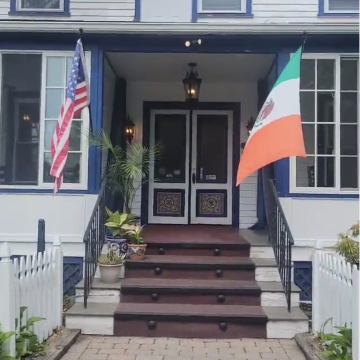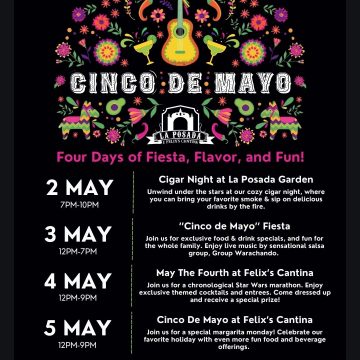The Mediterranean, a region renowned for its rich history, stunning landscapes, and vibrant cultures, also boasts a diverse culinary scene.
A gourmet trip through Mediterranean cuisines is like navigating a treasure map of flavors. Each dish tells a story of tradition, innovation, and the bountiful produce of the land and sea.
In this article, we will explore the diverse and delectable Mediterranean cuisines, from Greek mythology-inspired dishes to Tel Aviv’s modern twists and more.

A Taste of Greece
Greece, a country steeped in history and mythology, offers a culinary experience that mirrors its rich cultural heritage. Begin your journey with the iconic Greek salad, a refreshing combination of tomatoes, cucumbers, olives, and feta cheese drizzled with extra virgin olive oil.
National Geographic notes that moussaka is also worth trying. It is a layered casserole of eggplant, minced meat, and béchamel sauce, baked to golden perfection. Originally starting off as a Turkish dish, it is now an icon of Greek cuisine.
Souvlaki, skewered and grilled meat, is a street food favorite. Baklava, with layers of phyllo dough, nuts, and honey, provides a sweet ending to your Hellenic feast. Greek cuisine celebrates simplicity and freshness, with olive oil as its cornerstone and a variety of herbs enhancing every dish.
Savoring Sicily
Sicilian cuisine is a symphony of flavors influenced by its diverse history. Begin your culinary exploration with arancini, rice balls stuffed with savory fillings, a popular street food snack. Move on to caponata, a sweet and sour eggplant relish that encapsulates the island’s culinary contrasts.
According to the Sydney Morning Herald, Sicily’s coastal location infuses seafood into many dishes, such as pasta con le sarde, pasta with sardines, fennel, and pine nuts. Cannoli, the beloved Sicilian dessert, offers a sweet ending to the meal. It features crispy pastry tubes filled with sweet ricotta and adorned with candied fruit.
Tel Aviv’s Culinary Canvas
Tel Aviv’s culinary scene, a testament to the city’s vibrant energy and creativity, unfolds against the backdrop of diverse landmarks. Begin your exploration at Carmel Market, a bustling marketplace in the heart of the city.
Here, the vivid colors and tantalizing aromas of fresh produce inspire chefs and home cooks while setting the stage for a culinary adventure.
Wander through the market’s labyrinthine alleys, encountering stalls brimming with spices, fruits, and local delicacies. As you dive into the sensory delights of Carmel Market, make sure to jot down a list of things to do in Tel Aviv. This should include items related to the vibrant food scene and also the cultural treasures waiting to be uncovered.
Venture beyond the market, and you’ll find Jaffa’s historic Flea Market, a treasure trove of vintage finds, eclectic antiques, and unique crafts. Isrotel notes that the market’s vibrant atmosphere provides a cultural interlude, allowing you to immerse yourself in the city’s rich history. Don’t forget to include a visit to Jaffa’s Flea Market, as it offers a unique blend of history and art.
According to the Royal Caribbean Cruises, modern Israeli cuisine emphasizes fresh, local ingredients, with dishes like shakshuka. It consists of eggs poached in a spicy tomato and bell pepper sauce. Sabich, a pita stuffed with fried eggplant, hard-boiled eggs, and tahini, is also a favorite. Explore the fusion of traditional Middle Eastern flavors with international influences, showcasing Tel Aviv as a culinary melting pot.
Moroccan Spice Trail
Moroccan cuisine is a sensory adventure, with spices and herbs playing a central role in every dish. Begin with a steaming bowl of harira, a hearty soup often enjoyed during Ramadan, followed by bastilla, a pastry filled with meat and almonds.
Tagines, slow-cooked stews with a variety of meat and vegetables, showcase the art of Moroccan cooking. Couscous, a staple, is often served with a fragrant medley of vegetables and meats. End your meal with a cup of sweet mint tea, an integral part of Moroccan hospitality.
Spanish Tapas Delight
In Spain, dining is a social affair, and tapas epitomize the joy of sharing. Begin with patatas bravas, crispy potatoes served with a spicy tomato sauce and aioli. Savor gambas al ajillo, shrimp cooked in garlic-infused olive oil, and chorizo al vino, a flavorful dish of sausage cooked in red wine.
The diversity of tapas extends to vegetarian options like padron peppers and patatas alioli. Each bite is a burst of Spanish flavors, and the communal spirit of tapas adds a special touch to the dining experience.
Cypriot Cuisine
Cyprus, at the crossroads of three continents, boasts a culinary heritage shaped by its strategic location. Begin with halloumi, a semi-hard cheese often grilled or fried and served with a squeeze of lemon. Souvlaki, skewered and grilled meat, is a staple, and moussaka takes on a distinct Cypriot twist.
Enjoy a variety of dishes showcasing the island’s bounty, from olives and hummus to keftedes, the flavorful meatballs. Cypriot cuisine harmoniously blends the flavors of the East and West, creating a culinary experience unique to the island.
The Italian Riviera
The Italian Riviera, with its picturesque coastal towns, offers a culinary journey that mirrors its stunning landscapes. Begin with focaccia, a simple yet flavorful flatbread topped with olive oil and herbs.
Dive into seafood risotto, a creamy rice dish infused with the briny flavors of the Mediterranean. Ligurian pesto, made with fresh basil, pine nuts, Parmesan, and olive oil, is a regional specialty that adds vibrancy to pasta dishes.
Conclude your meal with a serving of tiramisu, the classic Italian dessert that perfectly balances sweetness and richness.
In conclusion, our culinary expedition across the Mediterranean reveals a captivating array of flavors and traditions. From Greece’s iconic moussaka to Tel Aviv’s modern fusion and Sicily’s symphony of tastes, each region contributes a unique chapter to this epicurean journey.
Spanning Morocco, Spain, and Italian, this exploration underscores the Mediterranean’s enduring role as a diverse and timeless culinary haven. In every dish, the region’s rich history and vibrant cultures converge, offering a feast that transcends borders and celebrates the art of shared meals.




Leave a Reply